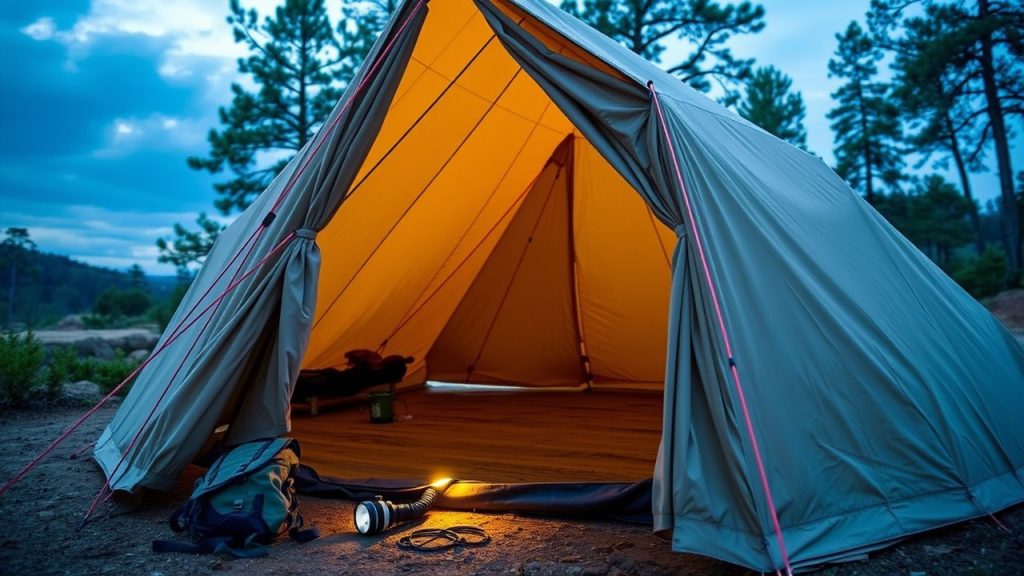Camping for a week in rough weather—think howling winds, relentless rain, or even unexpected snow—requires a tent that’s more than just a shelter; it needs to be a fortress. A well-chosen tent ensures you stay dry, secure, and comfortable, no matter what nature throws at you. In this guide, we’ve curated the 12 best tent ideas to handle rough weather in a week, prioritizing durability, waterproofing, wind resistance, and user-friendly features.
Drawing from expert reviews, user feedback, and testing by sources like Outdoor Gear Lab, Switchback Travel, and REI, these tents are built for the toughest conditions in 2025. We’ve also included nine frequently asked questions with detailed answers to guide your decision and expanded tips to prepare you for a week of rugged camping.
Why a Weather-Resistant Tent Is Essential for a Week-Long Trip
Rough weather can transform a camping trip into a survival test if your gear isn’t up to par. A week-long adventure means your tent must withstand prolonged exposure to elements like torrential rain, gusts up to 40 mph, or even light snow accumulation. Unlike backpacking, where weight is a primary concern, car camping or basecamp scenarios allow you to prioritize strength, space, and features like large vestibules for wet gear or reinforced poles for stability. Key considerations include a 4-season rating, high waterproof ratings (2000mm+ for floors, 1500mm+ for rainflies), and aerodynamic designs like domes or tunnels that deflect wind. Our selections emphasize these qualities, ensuring you can focus on enjoying your adventure rather than battling your shelter.
Top 12 Tent Ideas for Rough Weather Camping
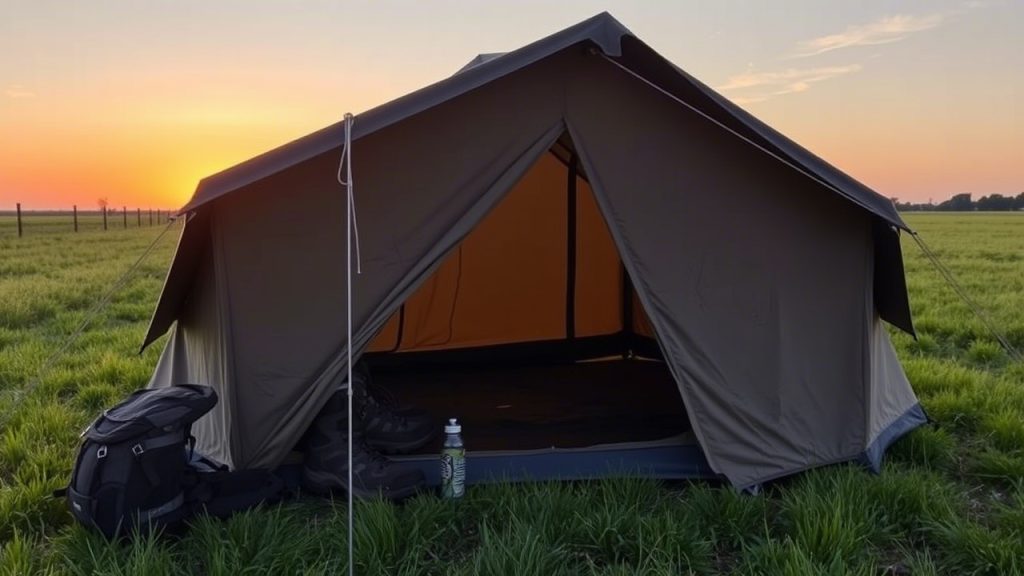
1. The North Face Mountain 25
- Best for: Extreme conditions, mountaineering
- Capacity: 2-person
- Key Features: 4-season, DAC Featherlite NSL poles, 70D nylon taffeta rainfly, dual doors, glow-in-the-dark zippers
- Why We Love It: Designed for alpine expeditions, the Mountain 25 is a geodesic dome that laughs off 50 mph winds and heavy rain. Its DAC poles are lightweight yet incredibly strong, and the 70D nylon rainfly with 1500mm PU coating ensures waterproofing. Dual doors and vestibules make it practical for gear-heavy trips, while glow-in-the-dark zippers simplify nighttime use. Setup takes 10–15 minutes and requires practice due to the complex pole structure, but once pitched, it’s rock-solid. Testers note its performance in Himalayan storms, though it’s snug for two with bulky gear.
- Price: ~$690
2. REI Co-op Arete ASL 2
- Best for: Lightweight 4-season versatility
- Capacity: 2-person
- Key Features: 6 lb 9 oz, convertible 3/4-season design, Easton Syclone poles, 30D ripstop nylon
- Why We Love It: The Arete ASL 2 is a rare 4-season tent that’s light enough for backpacking but tough enough for rough weather. Its convertible design lets you remove mesh panels for better ventilation in milder conditions or batten down for storms. Easton Syclone poles resist bending in high winds, and the 1500mm rainfly keeps water out. Setup is quick (8–10 minutes) with color-coded poles, but the 35 sq. ft. floor is tight for two with winter gear. Users praise its performance in windy Pacific Northwest rain.
- Price: ~$449
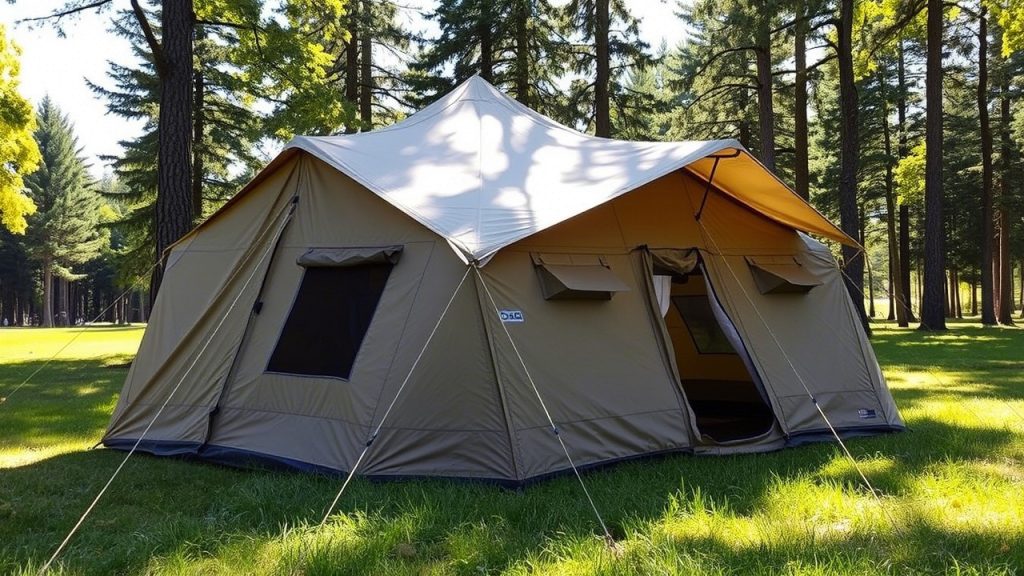
3. Hilleberg Nallo 3 GT
- Best for: Small groups in severe weather
- Capacity: 3-person
- Key Features: Tunnel design, Kerlon 1200 fabric (30D ripstop nylon), extended vestibule, 6 lb 10 oz
- Why We Love It: Hilleberg’s Nallo 3 GT is a premium tunnel tent built for brutal conditions. The Kerlon 1200 fabric (1800mm waterproofing) and 9mm DAC poles create a wind-shedding structure that’s been tested in Arctic storms. The extended vestibule (over 20 sq. ft.) is a game-changer for storing wet gear or cooking in rain. Setup takes 5–7 minutes but requires precise staking in high winds. It’s expensive, but its durability justifies the cost for frequent campers.
- Price: ~$945
4. Big Agnes Battle Mountain 2
- Best for: Alpine durability
- Capacity: 2-person
- Key Features: 4-season, 40D nylon fabric, DAC NSL poles, 7 lb 3 oz
- Why We Love It: The Battle Mountain 2 is built for high-altitude punishment, with a sturdy dome design and 40D nylon walls that resist tearing in wind-driven debris. Its DAC poles and multiple guyline points ensure stability in gusts up to 60 mph. The 2000mm rainfly and sealed seams keep you dry, though ventilation is limited, so open vents in milder weather. Setup is straightforward (10 minutes) but benefits from two people. Testers love its reliability in Colorado’s Front Range storms.
- Price: ~$749
5. MSR Access 3
- Best for: Winter-ready group camping
- Capacity: 3-person
- Key Features: 6 lb 10 oz, central-support frame, 20D ripstop nylon, 3000mm floor
- Why We Love It: The Access 3 is a lightweight 4-season tent with a unique central-support frame that prevents snow buildup and resists wind. Its 20D ripstop nylon rainfly (1200mm) and 3000mm DuraShield floor ensure waterproofing, while two vestibules keep gear organized. Setup takes 7–10 minutes, but soft ground requires extra stakes. Users report it thriving in snowy Sierra Nevada conditions, though it’s less ventilated for warm, wet weather.
- Price: ~$799
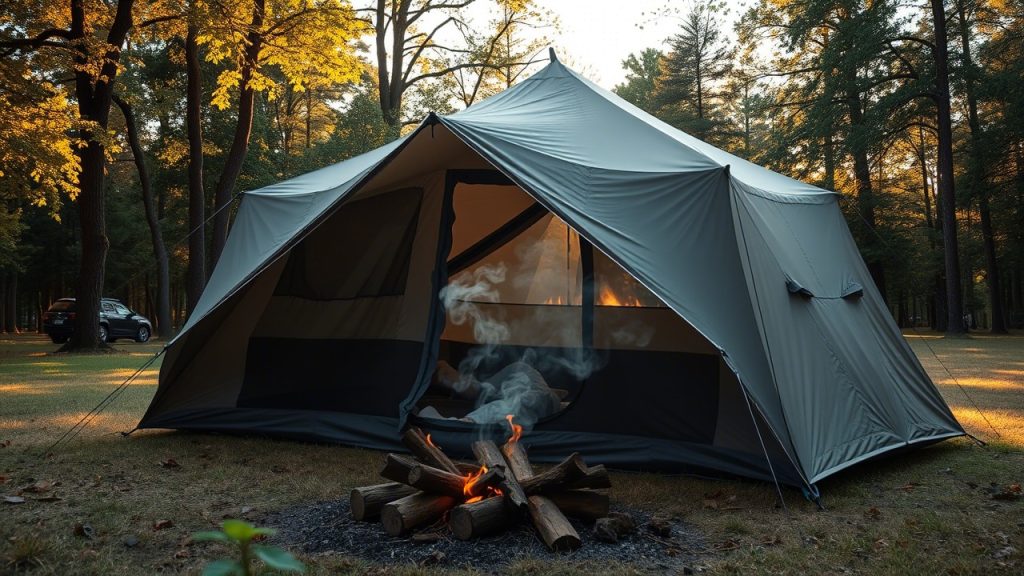
6. Nemo Kunai 2P
- Best for: Versatile 4-season use
- Capacity: 2-person
- Key Features: 4 lb 6 oz, adjustable vents, 15D nylon walls, DAC Featherlite poles
- Why We Love It: The Kunai 2P is a lightweight 4-season tent that handles rain, wind, and light snow. Its 15D nylon walls and 1500mm rainfly are durable, and adjustable vents reduce condensation in wet conditions. The DAC poles and multiple guyline points ensure stability in 40 mph gusts. Setup is fast (5–7 minutes) with a single-pole system, but the 36 sq. ft. floor is cozy for two. It’s a favorite for mixed-weather trips in the Rockies.
- Price: ~$529
7. Marmot Thor 3P
- Best for: Group expeditions
- Capacity: 3-person
- Key Features: 6-pole dome design, 40D ripstop nylon, 10 lb, large vestibule
- Why We Love It: The Thor 3P is a tank, with a 6-pole dome structure that stands firm in 50 mph winds. Its 40D ripstop nylon walls and 2000mm rainfly are nearly indestructible, and the 21 sq. ft. vestibule stores gear or doubles as a cooking area. Setup takes 12–15 minutes due to the complex poles but is manageable solo. Users praise its performance in Alaskan storms, though it’s heavy for backpacking.
- Price: ~$699
8. Black Diamond Eldorado
- Best for: Solo or duo mountaineers
- Capacity: 2-person
- Key Features: Single-wall, 5 lb 1 oz, ToddTex fabric, internal pole system
- Why We Love It: The Eldorado is a single-wall tent for extreme conditions, using ToddTex fabric (1800mm waterproofing) and an internal pole system for quick setup (5–7 minutes). Its dome shape sheds wind and snow, and at 5 pounds, it’s ultralight for mountaineering. Ventilation is critical to avoid condensation, so use the vents wisely. It’s a go-to for high-altitude climbers in Patagonia.
- Price: ~$799
9. REI Co-op Base Camp 6
- Best for: Family car camping in storms
- Capacity: 6-person
- Key Features: Dome design, 80-inch peak height, 70D nylon, two vestibules
- Why We Love It: Perfect for car campers, the Base Camp 6 offers a spacious 84 sq. ft. interior and 80-inch height for standing comfort. Its dome shape and 70D nylon rainfly (1500mm) handle wind and rain, while two vestibules keep gear dry. Setup takes 15–20 minutes and is easier with two people. Families love its stability in coastal storms, though it’s bulky (20 lb 11 oz) for packing.
- Price: ~$549
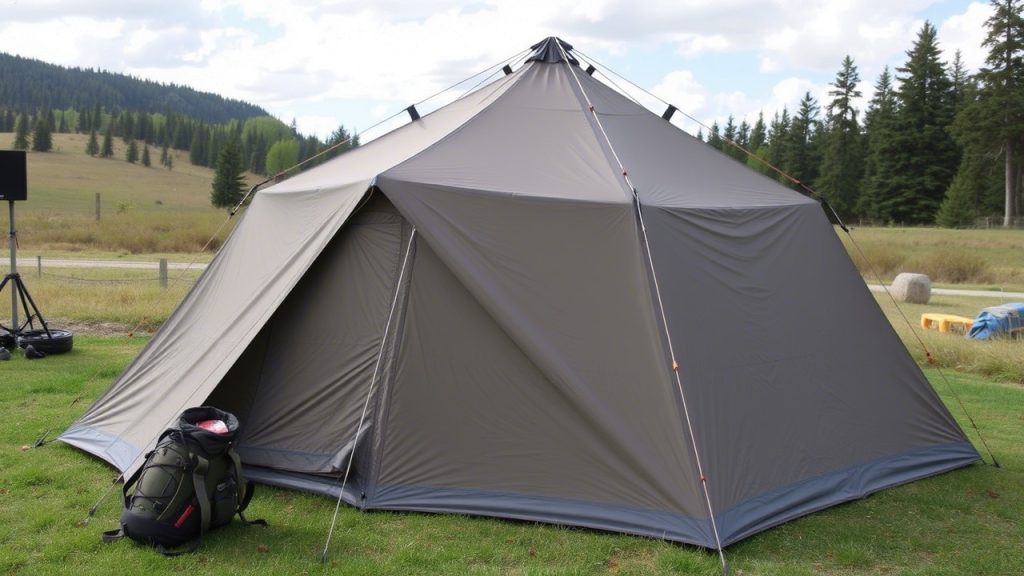
10. Mountain Hardwear Trango 4
- Best for: Basecamp durability
- Capacity: 4-person
- Key Features: 4-season, DAC Featherlite poles, 70D nylon, 10 lb 8 oz
- Why We Love It: The Trango 4 is a basecamp staple, with a robust dome design and DAC poles that withstand 60 mph gusts. Its 70D nylon rainfly (2000mm) and direct-connect points ensure stability, while two vestibules (20 sq. ft. total) store gear. Setup takes 15 minutes and requires precision in high winds. It’s a favorite for extended trips in the Cascades.
- Price: ~$950
11. SlingFin 2Lite Trek
- Best for: Lightweight durability
- Capacity: 2-person
- Key Features: 2.5 lb, WebTruss system, 20D high tenacity nylon, 1200mm rainfly
- Why We Love It: The 2Lite Trek is an ultralight 4-season tent with a WebTruss system that distributes wind load for exceptional stability. Its 20D nylon walls and 1200mm rainfly are surprisingly tough, and setup takes 5–7 minutes. The 28 sq. ft. floor is small, but it’s ideal for minimalist campers in windy deserts or mountains.
- Price: ~$489
12. Exped Orion III Extreme
- Best for: Stable group shelter
- Capacity: 3-person
- Key Features: Tunnel-dome hybrid, 40D ripstop nylon, exoskeleton poles, 7 lb 1 oz
- Why We Love It: The Orion III Extreme combines tunnel and dome strengths for stability in 50 mph winds. Its exoskeleton poles simplify setup (7–10 minutes), and the 40D nylon rainfly (1500mm) ensures waterproofing. The 44 sq. ft. interior is roomy for three, and the vestibule fits gear. Users love its performance in Scottish highlands storms.
- Price: ~$899
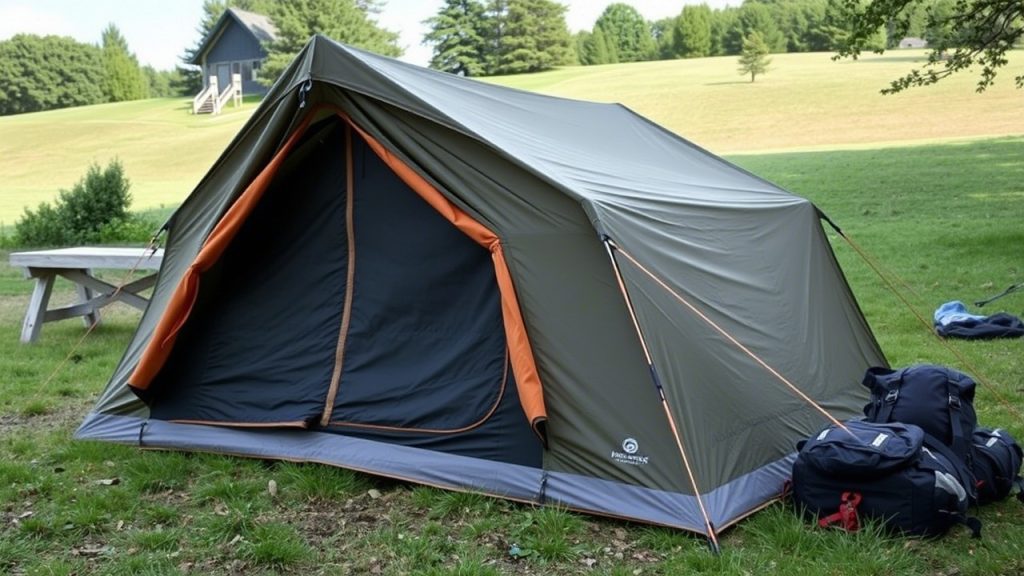
Key Features to Prioritize in a Rough Weather Tent
To survive a week of rough weather, your tent needs:
- 4-Season Rating: Designed for wind, rain, and light snow, with minimal mesh for warmth and robust poles.
- High Waterproofing: Floors should have 2000mm+ ratings, rainflies 1500mm+ to prevent leaks.
- Strong Poles: Aluminum or DAC poles resist bending; multiple poles (e.g., Marmot Thor’s 6) add stability.
- Aerodynamic Design: Dome (e.g., The North Face Mountain 25) or tunnel (e.g., Hilleberg Nallo) shapes deflect wind.
- Full-Coverage Rainfly: Extends near the ground to block rain and wind-driven spray.
- Vestibules: Essential for storing wet gear and cooking in rain (e.g., Trango 4’s 20 sq. ft.).
- Ventilation: Adjustable vents (e.g., Nemo Kunai) reduce condensation in prolonged wet weather.
- Robust Stakes/Guylines: Ensure enough are included or buy extras for secure anchoring in loose or frozen ground.
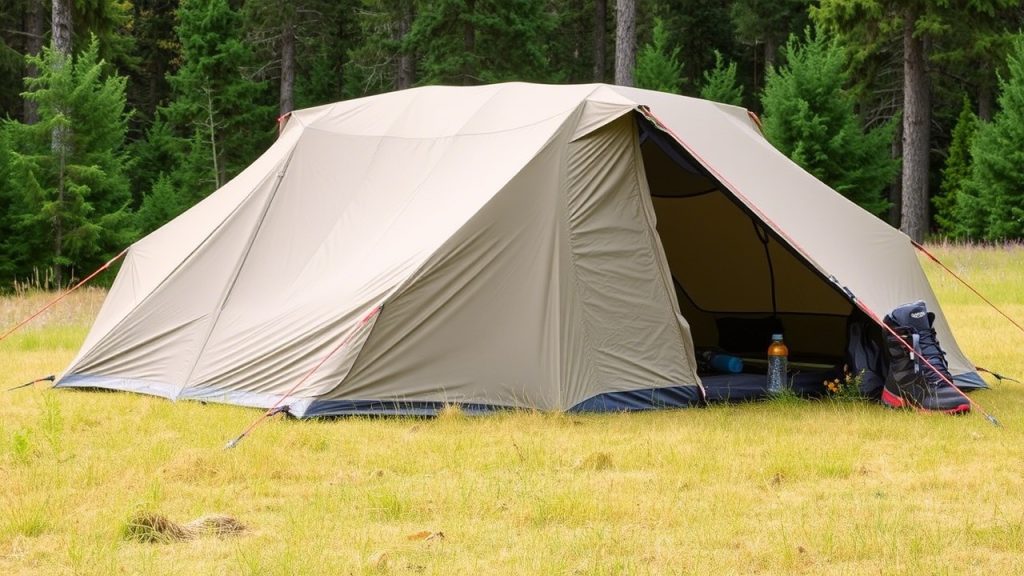
Expanded Tips for Camping in Rough Weather
- Choose a Smart Campsite: Seek natural windbreaks like trees or boulders, but avoid flood-prone lowlands or exposed ridges. Check weather forecasts and historical flood data for your area.
- Reinforce Anchoring: Use heavy-duty stakes (e.g., MSR Groundhogs) and all guylines. In snow or sand, use deadman anchors (buried objects like logs or bags filled with snow).
- Seam Sealing: Apply seam sealer (e.g., Gear Aid Seam Grip) to rainfly and floor seams before your trip for extra waterproofing.
- Use a Footprint: A custom footprint or heavy-duty tarp protects the tent floor from abrasion and prevents water pooling underneath.
- Manage Ventilation: Open vents during breaks in rain to reduce condensation, but close them in heavy wind to avoid spray. A small battery-powered fan can improve airflow.
- Pack Weather-Appropriate Gear: Bring a sleeping bag rated for 10°F below expected lows, a high-R-value sleeping pad, and waterproof clothing (e.g., Gore-Tex jackets).
- Organize Gear: Use dry bags for critical items (e.g., electronics, clothes) and store wet gear in vestibules to keep the interior dry and spacious.
- Carry a Repair Kit: Include duct tape, pole sleeves, fabric patches, and extra cord for on-the-fly fixes to poles, zippers, or tears.
- Practice Setup: Test your tent at home in windy or rainy conditions to master the process and identify weak points (e.g., missing stakes).
- Stay Safe: Monitor weather via a portable radio or satellite communicator. Have an evacuation plan for severe storms or flooding.
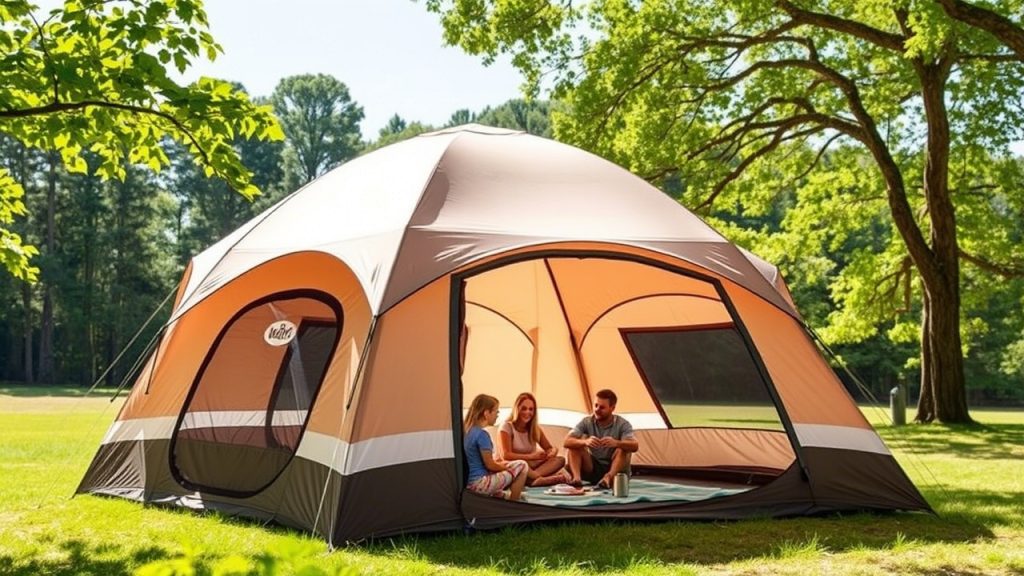
Caring for Your Tent After Rough Weather
To keep your tent in top shape for future trips:
- Dry Thoroughly: Wet tents breed mold. Hang or pitch your tent at home to dry completely before storing.
- Clean Carefully: Hand-wash with mild soap (e.g., Nikwax Tech Wash) and a sponge; avoid machine washing, which damages coatings.
- Inspect for Wear: Check poles for bends, zippers for snags, and fabrics for tears after each trip. Repair small issues immediately.
- Store Properly: Store loosely in a breathable bag in a cool, dry place to prevent fabric degradation and mildew.
- Reapply Waterproofing: Use sprays (e.g., Nikwax Tent & Gear SolarProof) or PU coatings to refresh rainfly and floor waterproofing every 1–2 years.
9 Frequently Asked Questions About Rough Weather Tents
1. What makes a tent suitable for rough weather?
A rough weather tent needs a 4-season rating, strong aluminum or DAC poles, and a full-coverage rainfly with at least 1500mm waterproofing. Aerodynamic shapes like domes or tunnels (e.g., Hilleberg Nallo 3 GT) shed wind, while high-denier fabrics (e.g., 40D nylon) resist tearing. Multiple guyline points and sturdy stakes ensure stability in gusts up to 50 mph.
2. Can I use a 3-season tent in rough weather?
3-season tents are built for spring, summer, and fall, with more mesh for ventilation and lighter poles. They may collapse in high winds or leak in heavy rain. For a week of rough weather, choose a 4-season tent like the MSR Access 3, which has stronger poles and less mesh to handle storms and light snow.
3. Why is a full-coverage rainfly critical?
A full-coverage rainfly extends close to the ground, blocking rain, wind-driven spray, and snow from entering through mesh panels. It also adds insulation and privacy. For example, the Mountain Hardwear Trango 4’s 2000mm rainfly ensures dryness in prolonged downpours, unlike partial rainflies that leave gaps.
4. Are single-wall tents better for rough weather?
Single-wall tents like the Black Diamond Eldorado are lightweight and quick to pitch, ideal for mountaineering. However, they’re prone to condensation without proper ventilation, making them less comfortable for a week-long trip. Double-wall tents (e.g., Nemo Kunai 2P) manage moisture better and are more versatile for extended wet weather.
5. How do I ensure my tent stays stable in high winds?
Choose a low-profile dome or tunnel tent (e.g., Exped Orion III Extreme) and use all guylines and stakes. Anchor stakes in solid ground or use deadman anchors in snow/sand. Orient the tent’s narrow end into the wind, and test stability by shaking the frame before settling in. Extra stakes like MSR Groundhogs add security.
6. What’s the best tent size for a week in rough weather?
For comfort, upsize by one person: a 3-person tent (e.g., Marmot Thor 3P) suits two with gear, while a 6-person tent (e.g., REI Base Camp 6) fits families. Consider vestibule space for wet gear and enough floor area (40+ sq. ft. for two) to avoid feeling cramped during long rainy days.
7. How do I manage condensation in a tent during wet weather?
Condensation occurs when warm, moist air hits cold tent walls. Choose a double-wall tent with adjustable vents (e.g., Nemo Kunai 2P) and open them during dry spells. Store wet gear in vestibules, use a microfiber towel to wipe walls, and consider a small fan for airflow. Avoid cooking inside to reduce moisture.
8. Are expensive tents worth it for rough weather camping?
Premium tents like the Hilleberg Nallo 3 GT or Mountain Hardwear Trango 4 use high-denier fabrics, advanced pole systems, and meticulous construction, offering unmatched durability and weather resistance. For frequent or extreme trips, their longevity (10–20 years) and performance justify the cost compared to budget options that may fail in storms.
9. How long should a rough weather tent last?
With proper care—drying thoroughly, cleaning gently, and storing in a cool, dry place—a quality 4-season tent can last 10–20 years or 100–200 trips. Regular maintenance, like seam sealing and waterproofing reapplication, prevents degradation. Tents like the The North Face Mountain 25 are built for decades of abuse.
Conclusion
A week of camping in rough weather is a thrilling challenge, but the right tent makes all the difference. From the mountaineering-ready The North Face Mountain 25 to the family-friendly REI Co-op Base Camp 6, our 12 tent picks are engineered to keep you safe and comfortable through wind, rain, and snow. Focus on 4-season designs, strong poles, and full rainflies, and use our expanded tips to prepare for any conditions. Test your tent, pack smart, and embrace the adventure your weatherproof shelter has you covered!

